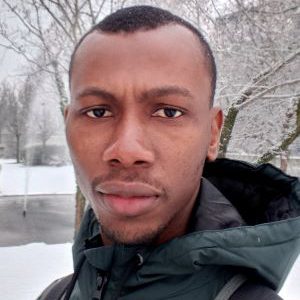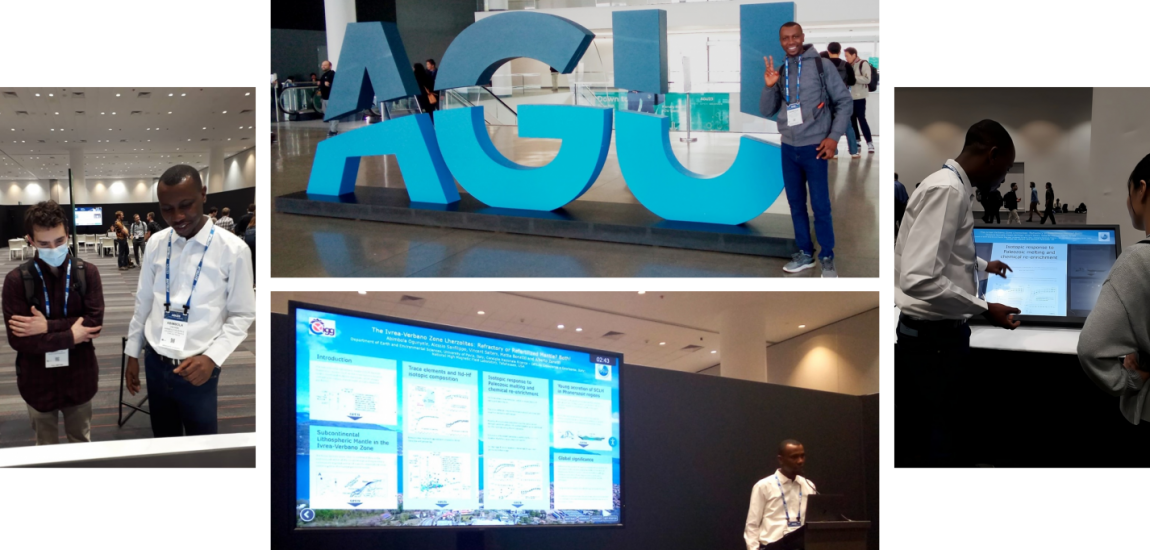
A message from the Earth’s subcontinental lithospheric mantle to delegates at the AGU Fall Meeting
EAG Ambassador Abimbola Chris Ogunyele reports back from the American Geophysical Union Fall Meeting in San Francisco, USA
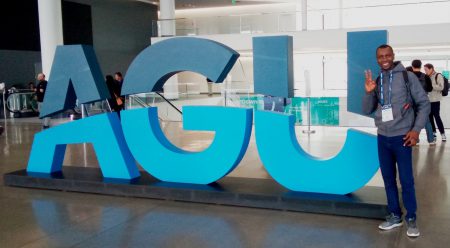
The American Geophysical Union (AGU) Fall Meeting is one of the largest geoscience meetings in the world, where over 25000 delegates from more than 100 countries gather every year to discuss and promote topics about Earth and space science. The AGU Fall Meeting for the year 2023 (AGU23) was held at the Moscone Centre in San Francisco, California, USA from 11 to 15 December and I had the opportunity to attend the meeting in person (Photo 1). Having attended many conferences across Europe and Africa in the last 10 years, it became important for me to take my scientific ideas to a new continent. The AGU Fall Meeting being a global geoscience conference was really attractive to me and it eventually became my first conference attendance on the North American continent. Thankfully, my attendance at the meeting was sponsored by the European Association of Geochemistry (EAG) as part of their Early Career Science Ambassador program.
At the meeting, I presented a paper focused on the subject of Earth’s mantle fertility, lithosphere accretion processes and timing. The presentation comprised a short (3-minute) oral talk followed by detailed discussion at a designated screen (Photos 2-4). During the talk, I introduced the audience to the major question addressed by my research and the proposed model that best answers the question. The research question is related to the long-standing debate on whether the fertile character of the subcontinental lithospheric mantle (SCLM) beneath many off-craton regions is the result of lower degrees of melting or the product of refertilization of ancient depleted (cratonic) SCLM. With a case study from the Ivrea-Verbano Zone mantle peridotite massifs in northwest Italy and using trace elements and Nd-Hf isotope systematics and modeling, I explained to the audience the results and standpoint of my research. The focal message which I delivered at the meeting is that “fertile mantle sections can be formed by low-degree melting and nearly contemporaneous metasomatism and can be accreted to the SCLM in ‘recent’ (i.e., Paleozoic) times. Hence, lithospheric mantle accretion processes are not necessarily restricted to Archean – Proterozoic times”. Overall, the audience were receptive of the hypothesis and engaged in meaningful discussion with me. I also received useful comments and suggestions on how to further develop the research.
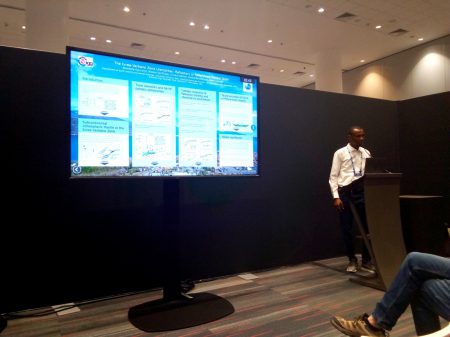
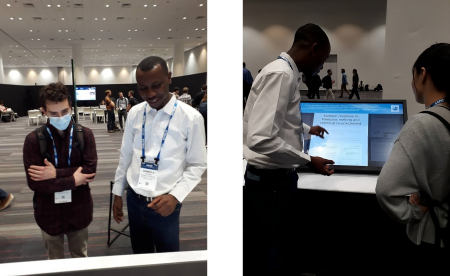
During the meeting, I also attended many oral and poster presentations of other delegates and engaged in scientific discussions and networking. I was particularly interested in research works related to mantle geochemistry, igneous petrology, geochronology, tectonophysics and allied areas. The AGU award lectures and plenaries were also nice to attend with very detailed and scientifically stimulating talks.
I am very pleased to have attended and contributed to the AGU23 Fall Meeting in San Francisco. The meeting provided a great platform for me to learn and know about the recent advances in the Earth and space science, as well as to make new connections and collaborations that can be useful for the progression of my research and career in the near-future. I certainly recommend attending the AGU Fall Meeting to every geoscience student and early career researcher.
I am very grateful to the European Association of Geochemistry for selecting me as an Early Career Science Ambassador and sponsoring my attendance at the meeting. My special thanks also goes to the Istituto di Geoscienze e Georisorse–Consiglio Nazionale delle Ricerche (IGG-CNR Pavia, Italy), the University of Pavia (Italy) and the National High Magnetic Field Laboratory at the Florida State University (USA) for providing the analytical facilities and funding to conduct the research that was presented at the AGU Fall Meeting. My research collaborators and co-authors – Alberto Zanetti, Alessio Sanfilippo, Vincent Salters and Mattia Bonazzi are acknowledged.

